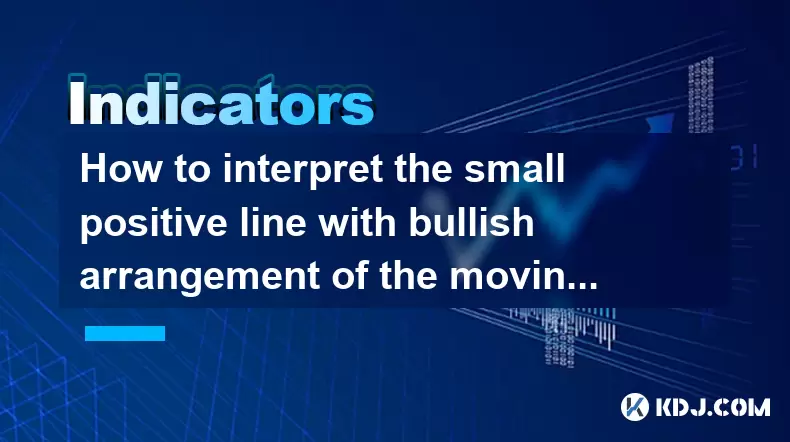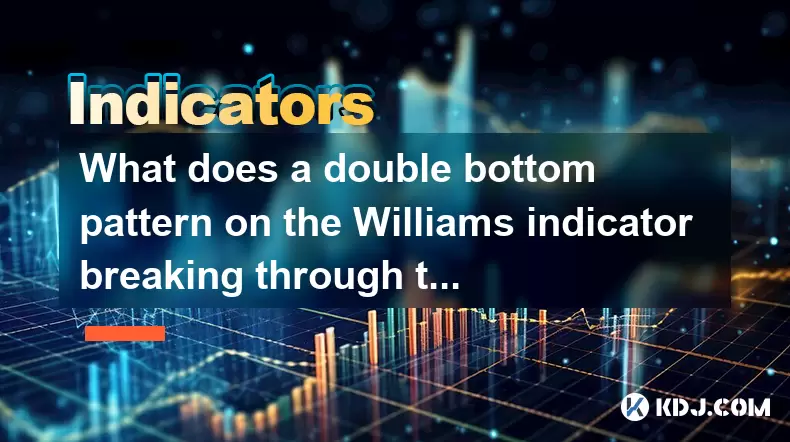-
 Bitcoin
Bitcoin $116400
-0.36% -
 Ethereum
Ethereum $4033
3.40% -
 XRP
XRP $3.302
-1.26% -
 Tether USDt
Tether USDt $1.000
-0.02% -
 BNB
BNB $796.1
1.67% -
 Solana
Solana $177.8
1.89% -
 USDC
USDC $0.9999
0.00% -
 Dogecoin
Dogecoin $0.2314
4.09% -
 TRON
TRON $0.3381
0.14% -
 Cardano
Cardano $0.7989
1.22% -
 Stellar
Stellar $0.4496
-1.84% -
 Chainlink
Chainlink $20.42
9.42% -
 Hyperliquid
Hyperliquid $41.17
0.88% -
 Sui
Sui $3.914
3.77% -
 Bitcoin Cash
Bitcoin Cash $584.7
1.52% -
 Hedera
Hedera $0.2632
-0.54% -
 Avalanche
Avalanche $24.09
3.40% -
 Ethena USDe
Ethena USDe $1.001
-0.02% -
 Litecoin
Litecoin $123.2
1.33% -
 Toncoin
Toncoin $3.318
-0.04% -
 UNUS SED LEO
UNUS SED LEO $8.984
-0.05% -
 Shiba Inu
Shiba Inu $0.00001323
2.85% -
 Uniswap
Uniswap $10.90
4.41% -
 Polkadot
Polkadot $3.999
3.34% -
 Dai
Dai $1.000
0.01% -
 Cronos
Cronos $0.1630
9.64% -
 Bitget Token
Bitget Token $4.484
0.82% -
 Monero
Monero $272.4
2.44% -
 Pepe
Pepe $0.00001173
6.03% -
 Aave
Aave $290.8
2.88%
How to interpret the small positive line with bullish arrangement of the moving average to push up? Is the main rising wave starting signal?
A small positive line with bullish moving averages can signal market strength, but consider volume and other indicators to confirm a rising wave's start.
Jun 02, 2025 at 04:14 pm

Understanding the Small Positive Line in Cryptocurrency Trading
In the world of cryptocurrency trading, understanding chart patterns and technical indicators is crucial for making informed decisions. One such pattern that traders often look for is the small positive line with a bullish arrangement of the moving average. This article will delve into how to interpret this pattern and whether it signals the start of a main rising wave.
What is a Small Positive Line?
A small positive line refers to a candlestick on a price chart that closes slightly higher than its opening price. This type of candlestick is often seen as a sign of bullish sentiment, but it is the context in which it appears that can provide deeper insights into potential market movements.
The Role of Moving Averages in Trading
Moving averages are essential tools used by traders to smooth out price data and identify trends over time. There are different types of moving averages, such as the Simple Moving Average (SMA) and the Exponential Moving Average (EMA), but for this discussion, we'll focus on their general use in conjunction with the small positive line.
Bullish Arrangement of Moving Averages
A bullish arrangement of moving averages occurs when shorter-term moving averages, such as the 20-day EMA, are positioned above longer-term moving averages, like the 50-day EMA. This configuration suggests that recent price movements are stronger than the historical average, indicating potential upward momentum.
Interpreting the Small Positive Line with Bullish Moving Averages
When a small positive line appears in the context of a bullish arrangement of moving averages, it can be interpreted as a signal that the market is gaining strength. Here’s how to interpret this scenario:
- Identify the small positive line: Look for a candlestick that closes slightly higher than its opening price. This line should not be significantly long, as it indicates a modest but positive movement.
- Check the moving averages: Ensure that the shorter-term moving average (e.g., 20-day EMA) is above the longer-term moving average (e.g., 50-day EMA). This confirms the bullish arrangement.
- Assess the overall trend: The small positive line should appear within an existing upward trend or at the beginning of a potential new trend. This can be confirmed by looking at the overall chart pattern and other technical indicators.
Is This the Start of the Main Rising Wave?
The appearance of a small positive line with a bullish arrangement of moving averages can be a promising sign, but it does not guarantee the start of a main rising wave. Here are some factors to consider:
- Volume confirmation: A significant increase in trading volume can confirm the strength of the bullish signal. If the small positive line is accompanied by high volume, it adds credibility to the potential start of a rising wave.
- Other technical indicators: Look at other indicators such as the Relative Strength Index (RSI) or the Moving Average Convergence Divergence (MACD) to see if they also suggest bullish momentum.
- Market sentiment: Consider the broader market sentiment and news affecting the cryptocurrency in question. Positive news can reinforce the bullish signal, while negative news might counteract it.
Practical Steps to Identify and Act on This Pattern
To effectively use the small positive line with a bullish arrangement of moving averages in your trading strategy, follow these steps:
- Set up your chart: Use a reliable trading platform that allows you to customize your charts. Add the necessary moving averages (e.g., 20-day and 50-day EMA) to your chart.
- Monitor the market: Keep an eye on the price action and look for the appearance of a small positive line.
- Analyze the context: Check if the small positive line is accompanied by a bullish arrangement of moving averages. Confirm this by observing the position of the shorter-term moving average relative to the longer-term moving average.
- Confirm with volume: Look at the trading volume to see if it supports the bullish signal. A spike in volume can indicate strong market interest.
- Use additional indicators: Cross-reference with other technical indicators to validate the bullish signal. For instance, an RSI reading above 50 can further confirm bullish momentum.
- Make a decision: Based on your analysis, decide whether to enter a long position. Set appropriate stop-loss and take-profit levels to manage your risk.
Frequently Asked Questions
Q: Can a small positive line be a reliable indicator on its own?
A: A small positive line alone is not a reliable indicator. It should be considered in conjunction with other technical indicators and market context to increase its reliability.
Q: How often should I check the moving averages to confirm a bullish arrangement?
A: It is advisable to check the moving averages daily or at least every few hours, depending on your trading strategy and the volatility of the cryptocurrency market.
Q: What other patterns should I look for to confirm the start of a main rising wave?
A: Other patterns to look for include the golden cross, where a shorter-term moving average crosses above a longer-term moving average, and bullish chart patterns like the cup and handle or ascending triangle.
Q: How can I differentiate between a false signal and a true bullish signal?
A: To differentiate between a false and a true bullish signal, consider the strength of the signal, the volume accompanying the price movement, and the consistency of other technical indicators. A true bullish signal is usually supported by multiple confirming factors.
Disclaimer:info@kdj.com
The information provided is not trading advice. kdj.com does not assume any responsibility for any investments made based on the information provided in this article. Cryptocurrencies are highly volatile and it is highly recommended that you invest with caution after thorough research!
If you believe that the content used on this website infringes your copyright, please contact us immediately (info@kdj.com) and we will delete it promptly.
- Moat Stocks & Mega-Cap Momentum: July's Standout Performance
- 2025-08-09 12:30:12
- Injective (INJ) Eyes $15.39 Breakout Amidst Explosive Network Growth
- 2025-08-09 12:30:12
- Ripple vs. SEC: XRP Price Soars as Legal Battles End, But Can It Outpace Rising Competitors?
- 2025-08-09 13:10:12
- DWP Management, XRP, and Digital Asset Funds: A New Era for Institutional Investment?
- 2025-08-09 13:30:12
- Pi Network's KYB Verification: A Leap Towards Sustainable Token Launch
- 2025-08-09 13:30:12
- Bitcoin, Dollar Alternative, and Institutional Adoption: A New Era?
- 2025-08-09 13:35:12
Related knowledge

What does it mean when the Triple Moving Average (TRIX) turns downward but the price doesn't fall?
Aug 09,2025 at 12:42pm
Understanding the Triple Moving Average (TRIX) IndicatorThe Triple Moving Average, commonly known as TRIX, is a momentum oscillator designed to filter...

What does it mean when the Williams' oscillator repeatedly hits bottoms but fails to rebound?
Aug 09,2025 at 09:28am
Understanding the Williams %R OscillatorThe Williams %R oscillator, developed by Larry Williams, is a momentum indicator used in technical analysis to...

What does a double bottom pattern on the Williams indicator breaking through the 50-day midline indicate?
Aug 09,2025 at 10:56am
Understanding the Williams %R IndicatorThe Williams %R indicator, developed by Larry Williams, is a momentum oscillator that measures overbought and o...

What does it mean when the MACD-histogram turns from green to red but the DIF line fails to form a golden cross?
Aug 09,2025 at 10:15am
Understanding the MACD and Its ComponentsThe MACD (Moving Average Convergence Divergence) is a widely used technical analysis tool in the cryptocurren...

When the J line in the KDJ indicator suddenly turns downward after being continuously overbought, does it indicate a top?
Aug 09,2025 at 06:35am
Understanding the KDJ Indicator and Its ComponentsThe KDJ indicator is a momentum oscillator widely used in cryptocurrency technical analysis to ident...

What does it mean when the TRIX indicator suddenly diverges downward after a long period of convergence?
Aug 09,2025 at 12:56am
Understanding the TRIX Indicator in Cryptocurrency TradingThe TRIX indicator, or Triple Exponential Average, is a momentum oscillator used in technica...

What does it mean when the Triple Moving Average (TRIX) turns downward but the price doesn't fall?
Aug 09,2025 at 12:42pm
Understanding the Triple Moving Average (TRIX) IndicatorThe Triple Moving Average, commonly known as TRIX, is a momentum oscillator designed to filter...

What does it mean when the Williams' oscillator repeatedly hits bottoms but fails to rebound?
Aug 09,2025 at 09:28am
Understanding the Williams %R OscillatorThe Williams %R oscillator, developed by Larry Williams, is a momentum indicator used in technical analysis to...

What does a double bottom pattern on the Williams indicator breaking through the 50-day midline indicate?
Aug 09,2025 at 10:56am
Understanding the Williams %R IndicatorThe Williams %R indicator, developed by Larry Williams, is a momentum oscillator that measures overbought and o...

What does it mean when the MACD-histogram turns from green to red but the DIF line fails to form a golden cross?
Aug 09,2025 at 10:15am
Understanding the MACD and Its ComponentsThe MACD (Moving Average Convergence Divergence) is a widely used technical analysis tool in the cryptocurren...

When the J line in the KDJ indicator suddenly turns downward after being continuously overbought, does it indicate a top?
Aug 09,2025 at 06:35am
Understanding the KDJ Indicator and Its ComponentsThe KDJ indicator is a momentum oscillator widely used in cryptocurrency technical analysis to ident...

What does it mean when the TRIX indicator suddenly diverges downward after a long period of convergence?
Aug 09,2025 at 12:56am
Understanding the TRIX Indicator in Cryptocurrency TradingThe TRIX indicator, or Triple Exponential Average, is a momentum oscillator used in technica...
See all articles

























































































